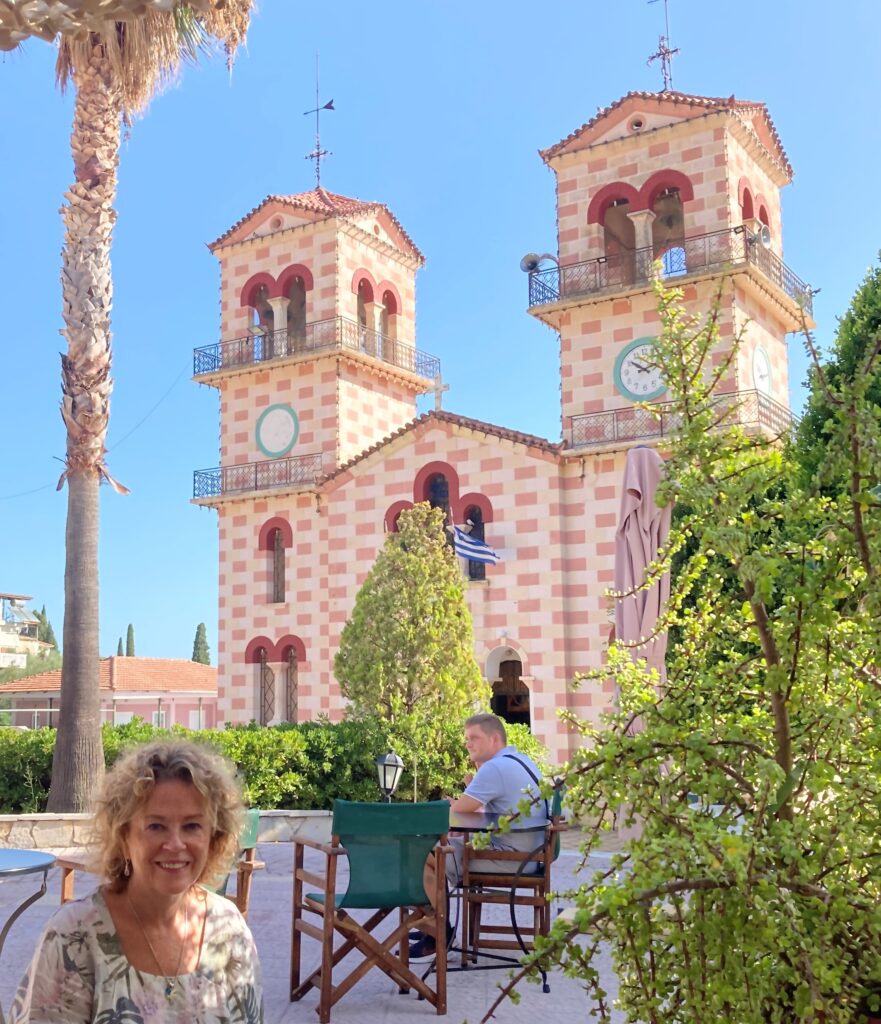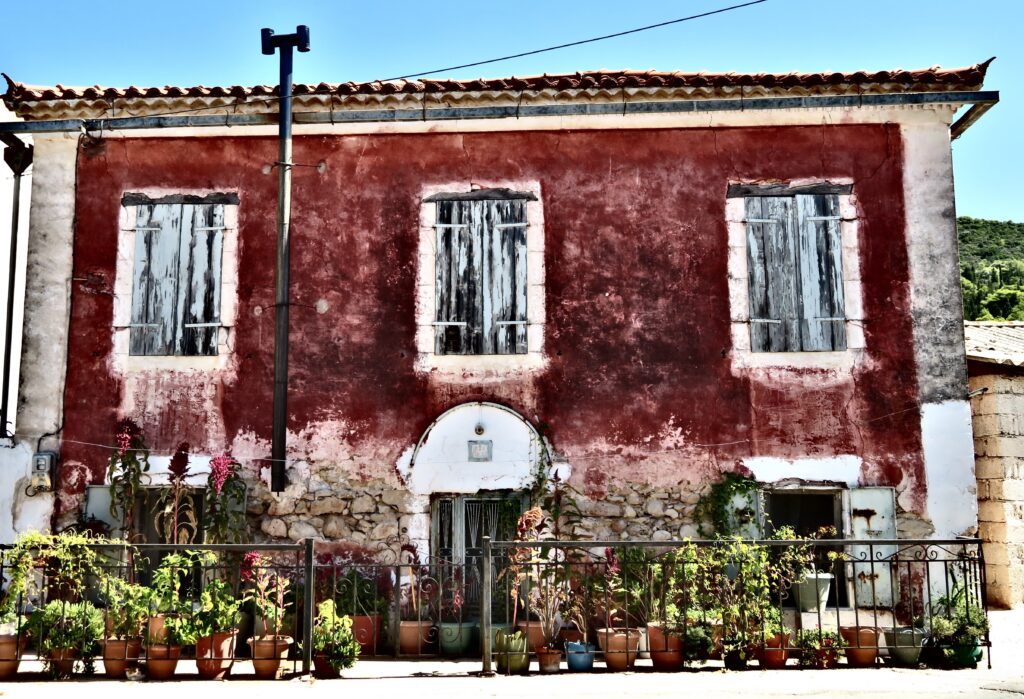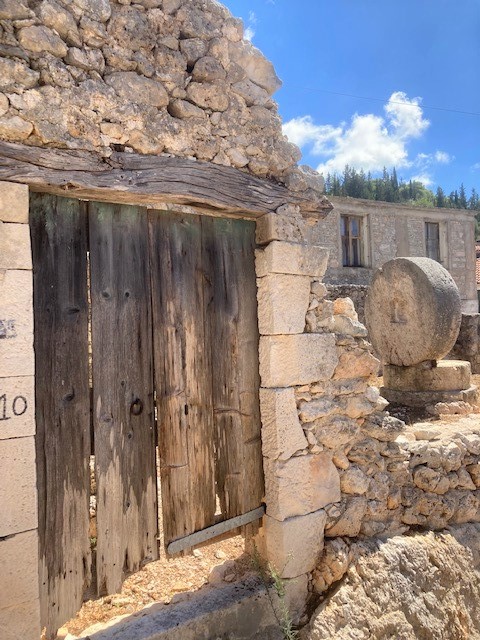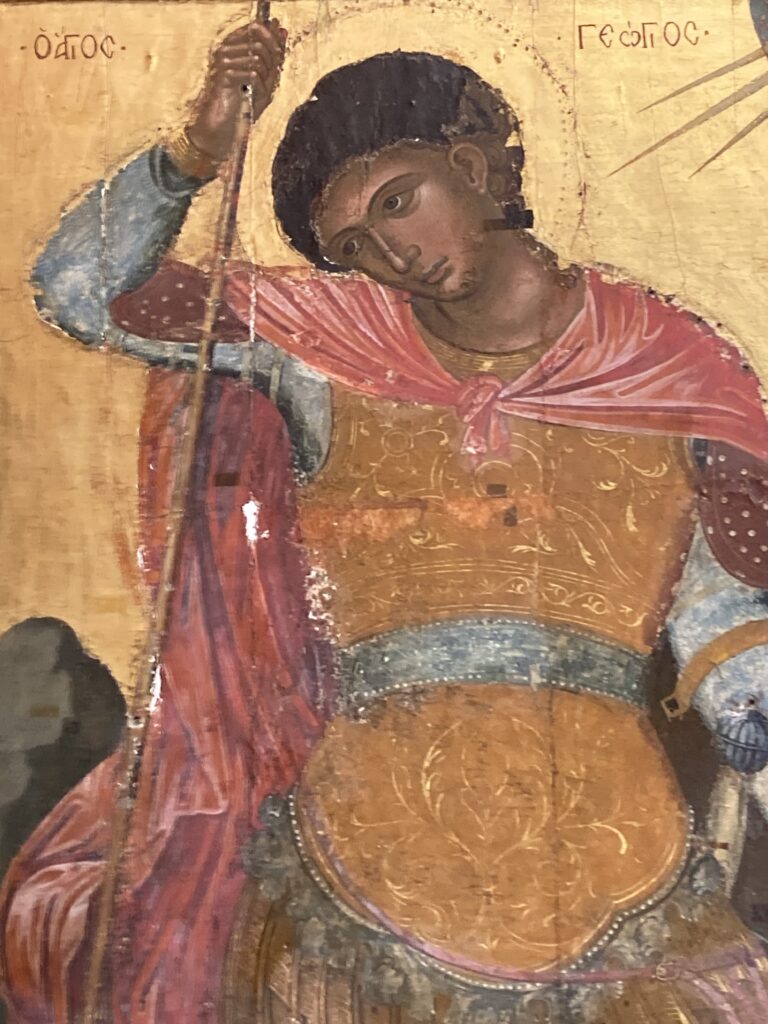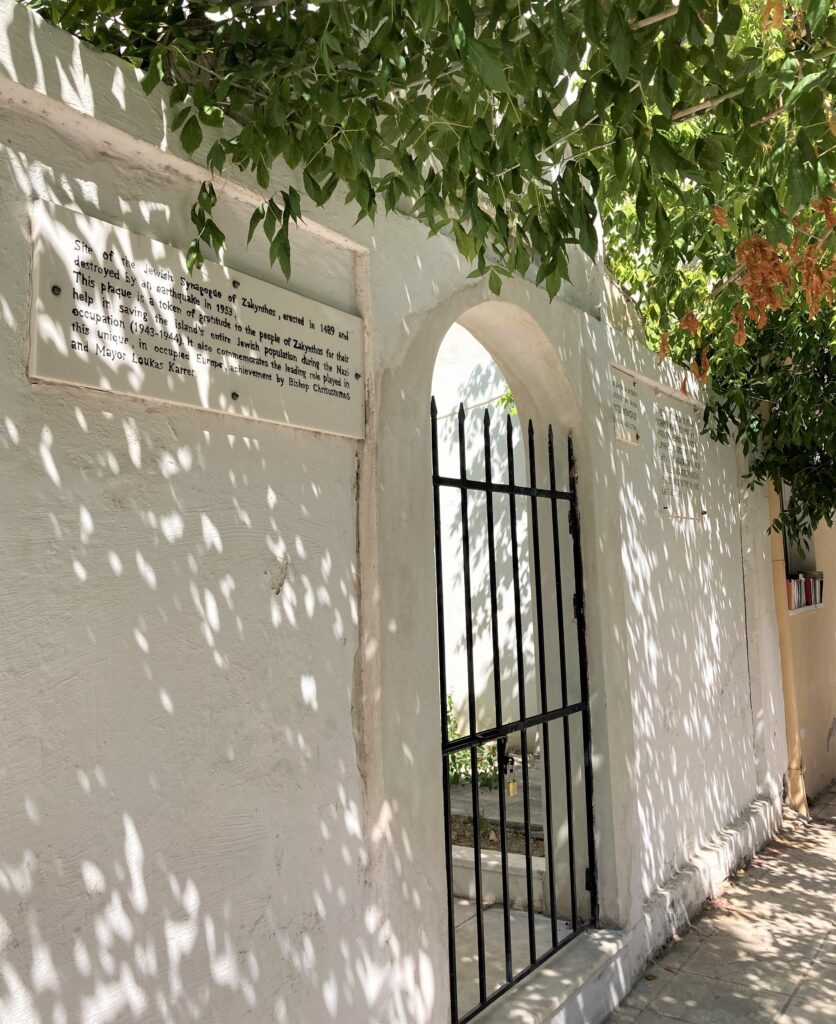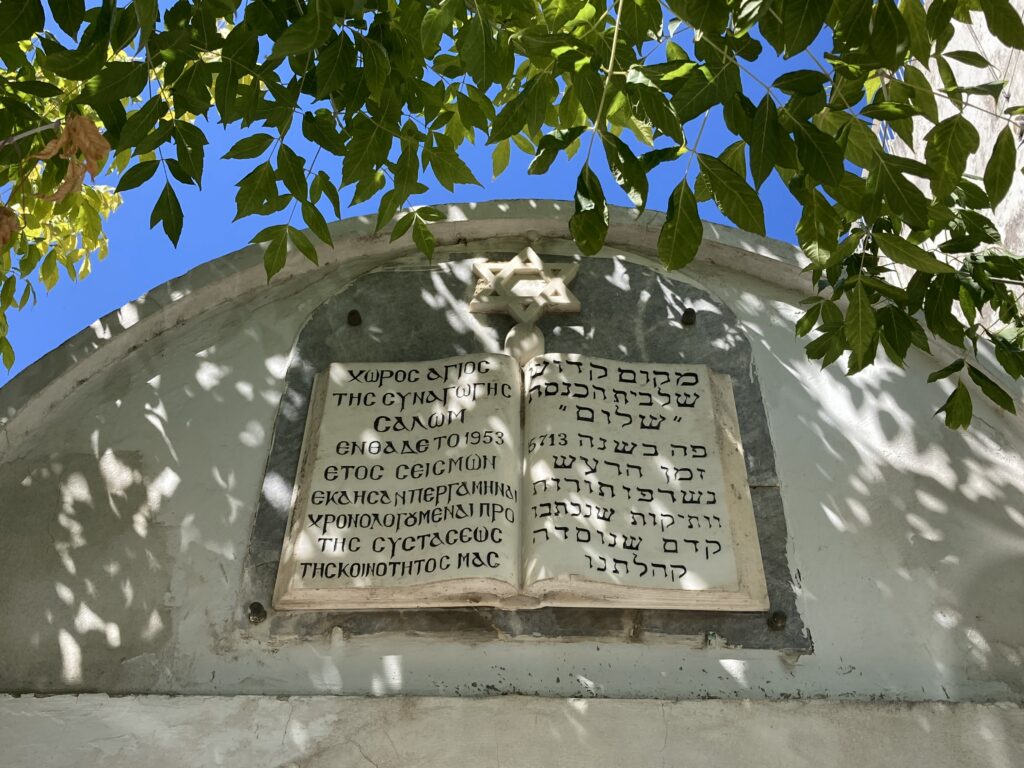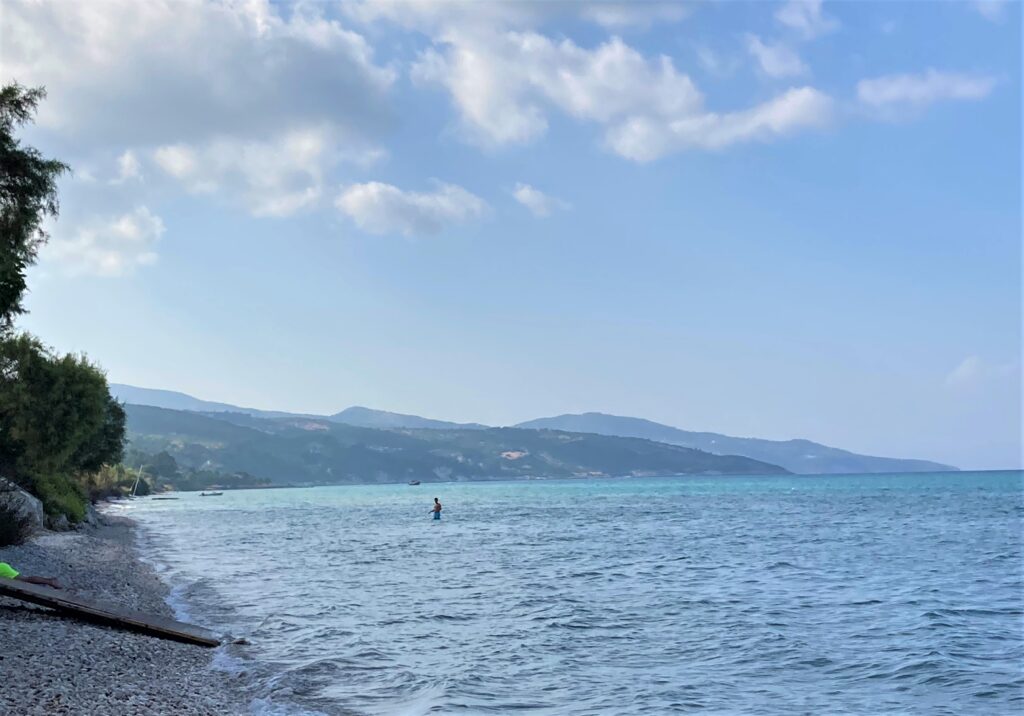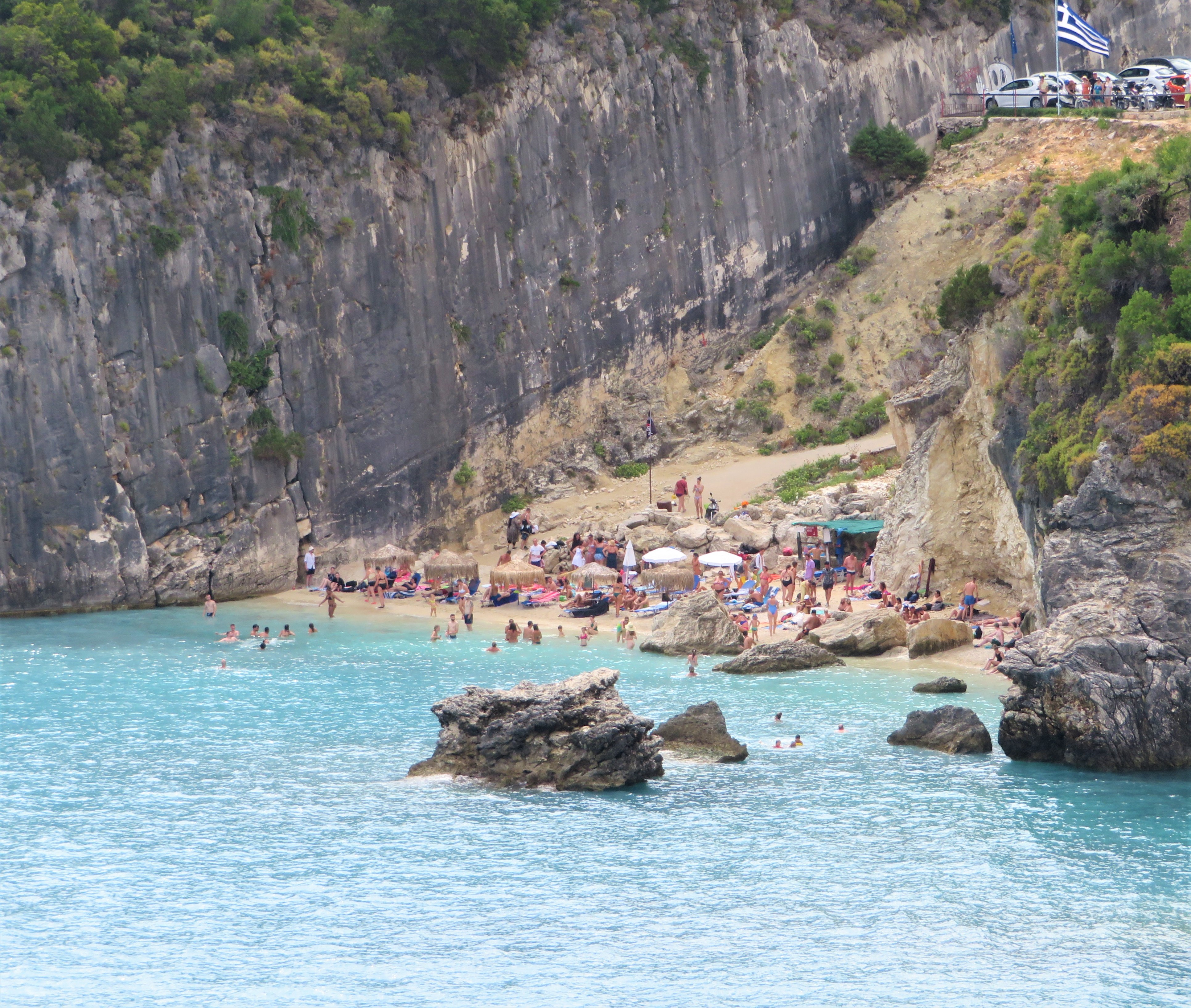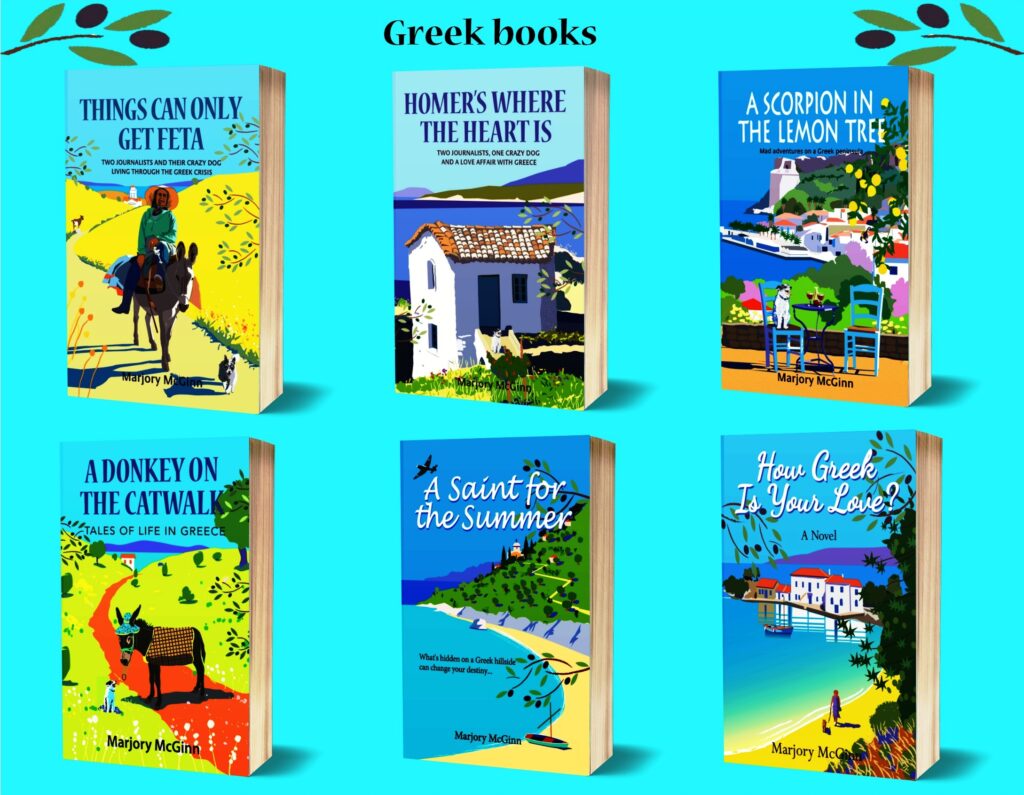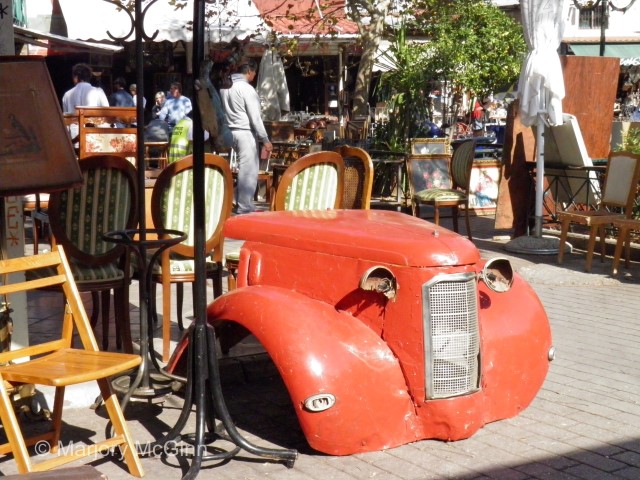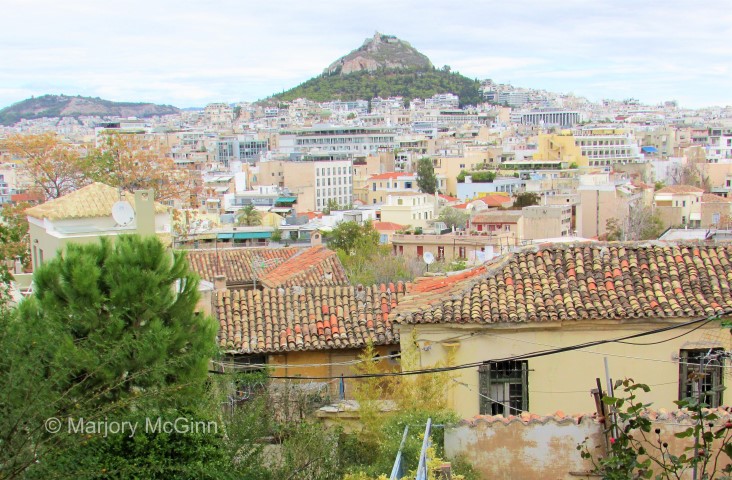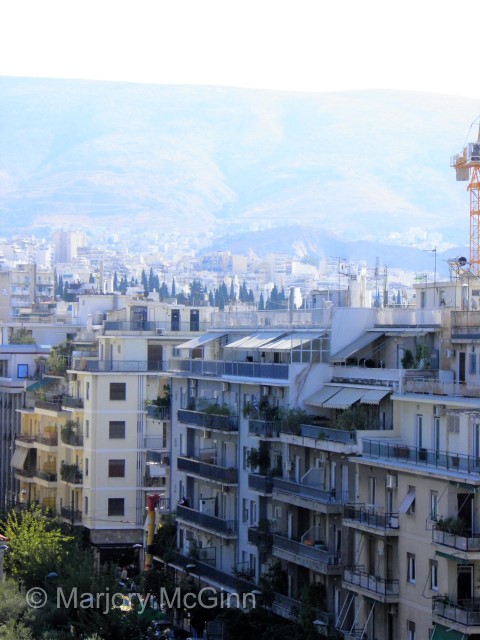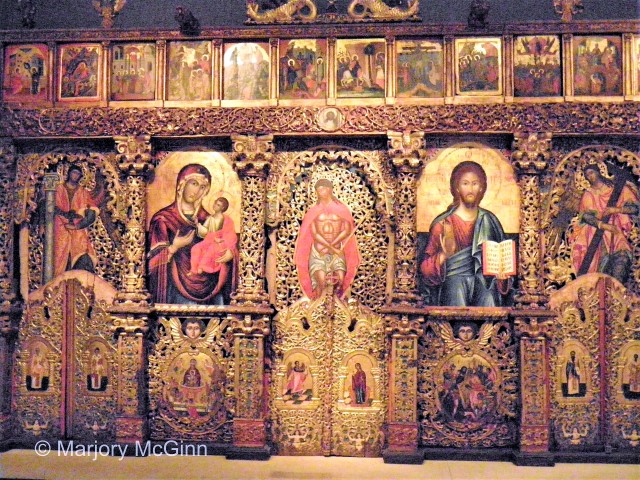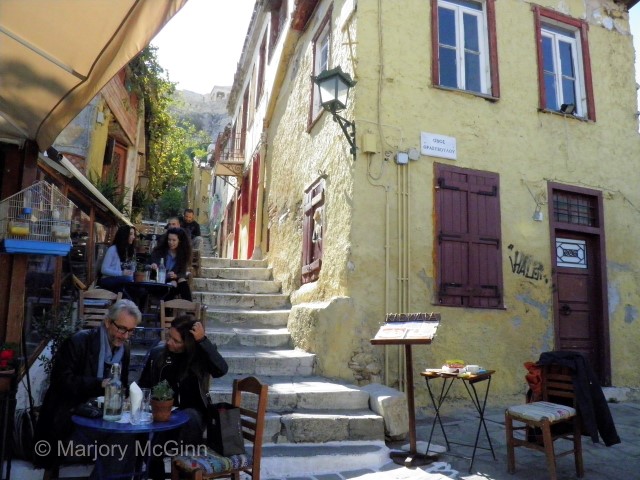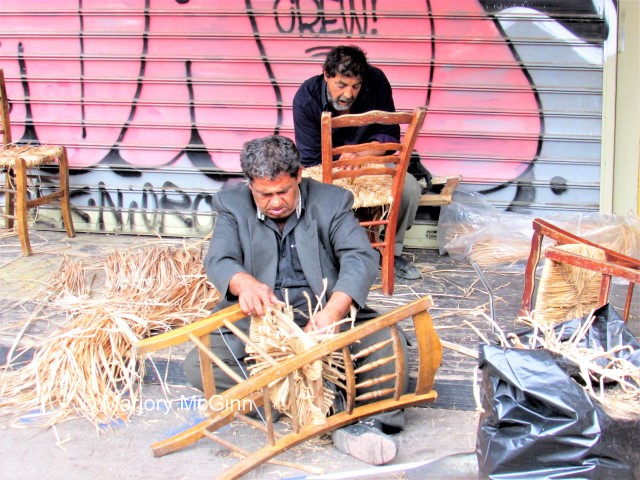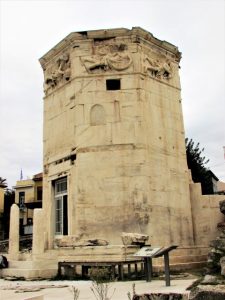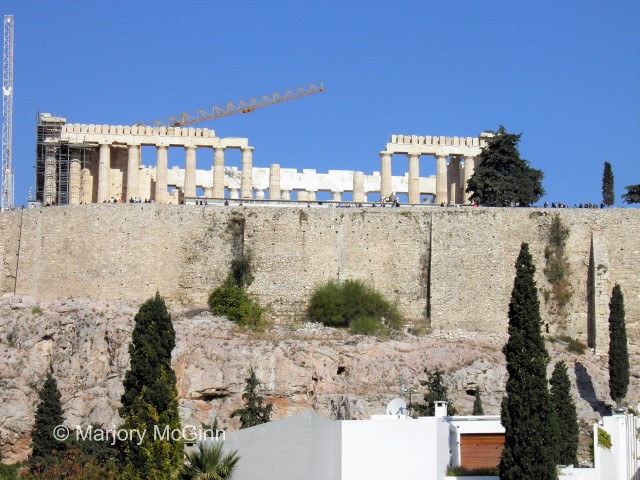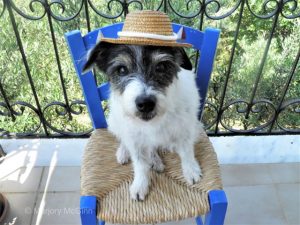IN church, in the middle of a solemn liturgy, a mobile phone rings from inside a black Karl Lagerfeld bag parked on its own chair in front of me. The nearby owner of the handbag, an elegant woman standing for this particular part of the service, hasn’t heard the mobile. On and on it goes, a modern ringtone that clashes with the austere chanting and the Byzantine saints looking down, weary-eyed, from the surrounding frescos. When the woman finally hears it after we’ve all been jolted by the noise, including I’m sure the papas, she quickly swoops on the bag and turns off the phone. Peace at last.
During our years of living in southern Greece, we got used to phones ringing in church services with hilarious silly ringtones like the William Tell Overture once in Kalamata’s cathedral. If I could have picked the right tone for the Lagerfeld woman it would have been Never On Sunday, popularised in the Greek film of the same name. But deep down, it’s one of the things I do love about Greece, that eccentric behaviour is tolerated, even in church, and the country isn’t hampered by the raft of po-faced restrictions that we have in Britain.
This is a country that admires individuality and doesn’t much like rules of any kind, which was in evidence during the Greek economic crisis when fiscal spreadsheets and EU directives caused more than a little pain to these exuberant people. Strangely though, British people are catching up and ditching rules, especially in politics: environmental laws, labour laws and parliamentary procedure, but in a much less charming way.
We were having a September break on the Ionian island of Zakynthos, which we’d never visited before, staying in the village of Katastari. Despite being the largest village on the island, it’s rural and laid-back and a short drive from the popular, some might say slightly touristy, Alykes beach area, and yet it felt like a world away. It was a typical village, slightly ramshackle round the edges with olive groves, dogs chained in fields, and as usual in rural villages, there were old, rundown buildings too. Sad to see a few old tavernas and kafeneia now closed, though the newer kafeneio Bakaliko by the main square was rather pleasant, recently opened by a local woman offering a shiny version of the trad kafeneia with their typical scuffed rush-bottom chairs and battered metal tables.
It was a nice place to sit on a Sunday near the church of the Panayia (Virgin Mary) and watch people passing by, and meet a few of our neighbours. The house we rented was an interesting one, built over the site of an old stone property which once belonged to the owner’s grandmother. The original dwelling was flattened during the 1953 earthquake that ruined much of the island. The new house has a traditional feel with stone walls and a smattering of rural mementos. It has a small garden at the back filled with trees and flowering shrubs but there’s no escaping the rural vibe with the nearby roosters crowing well before sun-up, turkeys gobbling at intervals, and dogs barking when the mood took them, reminding us of life in the Mani, in the southern Peloponnese, where we once lived.
Noisy at times but, really, we wouldn’t have had it any other way. This is real Greece with all its joys and imperfections. It was surrounded by a few other houses and what the neighbours thought of foreigners staying in their midst I couldn’t be sure, well not until the end of our stay anyway. More of that later.
To see the village house, Villa Gioia, in Katastari, visit www.villagioia.gr
Zakynthos is a small compact island and its beauty spots are already well known and written about, mainly the Shipwreck Cove with its spectacular cliffs and the rusting, stranded ship. Sadly, we couldn’t go there as they’d had a landslip on one of the cliffs in previous days, but we toured the north-east coast up to the small harbour of Ayios Nikolaos, where boats leave for the famous blue caves. For a different side to Zakynthos, however, we took the road west across the island to the hillside villages of Maries, with its typical Greek square and a slew of attractive old buildings with a shabby chic aura, like the one below.
The village of Exo Hora, further south, was also traditional in parts, with a lovely view to the sea. And if derelict old village buildings attract you, there was a small settlement on the west of this village with an abandoned mill and some crumbling stone houses, as you see in many hillside villages in Greece. One two-storey wreck appeared to have ancient-looking columns in the back garden, either a fanciful addition or an indicator of a much older structure that had survived the 1953 earthquake, whereas the house hadn’t. It was curious.
The town of Zakynthos, in the south-east, with a coastal setting and a thriving harbour, turned out to be the biggest draw for us, even though in September it was still hoaching with tourists and it was difficult to find a parking space. However, even that turned out to be a bonus. We had to park in a back street at the edge of the city and it meant walking quite a way through the backstreets, which were fascinating and teeming with urban life, to get to the centre. Here you find the imposing squares of St Markos, lined with tavernas, and the lovely Solomos Square, named after the island’s acclaimed poet Dionysios Solomos, whose rousing poem Hymn to Freedom became the national anthem of Greece.
As the famous church of Ayios Dionysios (the patron saint of the island) was also on our route, we called in for a visit. It has outstanding frescos and a side chapel containing some of the relics of Saint Dionysios, though mercifully they weren’t on show. If you want to know how church relics have brought me out in panic attacks in Greece, you might like to read my chapter on the subject in my fourth memoir A Donkey On the Catwalk.
But it wasn’t the famous frescos here that really caught my attention on that very hot sunny day so much as an old papas sitting regally on a padded chair by an open side door, his eyes closed and his long white candy-floss hair blowing in a cool breeze from the nearby harbour. I chanced my luck to get a few photos, hoping I wouldn’t disturb him and get a telling off for my efforts. But the papas seemed to be surfing a different celestial plane from the rest of us, or was sound asleep, and didn’t budge.
The town is full of treasures like the Byzantine Museum on Solomos Square that houses a fabulous collection of frescos, icons and whole altar panels taken out of the many churches, some dating from the early 16th century, that were tragically destroyed during the devastating earthquake of 1953.
One of the most unique sites in the city is at 4A Tertseti Street, where the city’s Jewish synagogue was once situated but destroyed during the 1953 earthquake. The private garden site is now a memorial to the two brave men who helped to save 275 local Jews during 1943, when Nazi invaders controlled the island. Bishop Chrisostomos Dimitriou and the mayor Loukas Karrer were instructed by the German commander to draw up a list of the island’s Jewish population so they could be deported to death camps. On an island where Jews had lived for centuries and had always been accepted, the two men tacitly refused to hand them over to the Germans and boldly put their own names on the list instead, telling the commander that all the Jews had left the island already, which many later did, or were hidden by the islanders. The entire Jewish population was thereby saved. For more information visit www.jewishmuseum.gr
While there are plenty of tavernas in the town centre, many geared to tourists, it’s worth sleuthing out some of the more authentic places, like the Stathmos, which was recommended by Nikos, the helpful owner of Villa Gioia. Stathmos means bus station, which is what the old building was until recently. It still has a slight utilitarian feel about it, with its wide metal awning at the front and dark green shutters, but the caged canaries were a lively addition and the waiters were chirpy as well. While we waited for our meal to arrive, I kept anticipating a city bus pulling up out front for a take-away though it never happened of course. The Stathmos is an old-style place, reminiscent of tavernas you might have encountered decades ago with similar dishes and a no-nonsense approach. We had giant stuffed peppers and a moussaka, all very tasty and filling.
Stathmos, near the Strada Marina, Filita 42. +03 2695 024040
A trip to town wouldn’t be the same without a drive up the hill behind the town to the upper district called Bochali, with its church, castle and cafes. The view down to the city and harbour is one of the most photographed in Greece and is stunning (see top photo).
Some of Zakynthos is criticised for being overdeveloped and the south coast, with the infamous clubby Laganas, comes into that category and while popular Alykes on the east coast seemed touristy as well with its fair share of more commercial restaurants, and bars with names like Piccadilly Bar etc, it has one big redeeming feature: the beach. It’s a long shallow beach, with warm and clear water, and if it’s peace you’re craving without sunbeds and tourist tat, the northern end of the beach, where fewer tourists seemed to venture, is quite divine.
There are plenty of tavernas in Alykes, though nothing stood out for us. The place we found the most peaceful and authentic was a family-run restaurant on a hill above the popular tiny beach north of Katastari, called Xigia, which has sulphur springs bubbling up into the water, reported to be therapeutic. The restaurant on the hill above is called the Nireas, run by a charming family with good wholesome Greek dishes and an awesome view right down the coast and across to the nearby island of Kefalonia.
Nireas taverna, mobile: 697 3988483.
For me, Greece is all about the people and Zakynthos proved to be a friendly place. In a couple of weeks we had got to know some of the villagers in Katastari well enough to be sorry we had no time to find out more, like the brothers who run the supermarket next to the church, one of whom had spent a few years in Chicago but had always dreamt of coming back to his birth village to live in the house his family have owned for generations. The woman who runs the local bakery was also very entertaining and convivial and if you want to improve your Greek on an island holiday, she’s your go-to woman. She makes a pretty good spanakopita (spinach and feta) pie as well.
On the day we left the house, I looked around and thought I’d probably miss the olive groves and the rural eccentricity and that satisfying sense of living in a real slice of Greece, especially with the nearby church tolling the hour – though not beyond 11pm – and the crazy ding-dong of bells on a Sunday morning. I’d miss the roosters, maybe, and the dogs. Here’s the thing about the dogs. The nearby owner had them no doubt to protect her chickens etc and the first few nights they seemed to bark a lot.
One night I had a cough and every time I started up, one dog in particular barked. It went on a while. Cough, bark, cough, bark, as if we were having some odd nocturnal conversation over our respective yards. In the following days, the dogs barked less. It suddenly occurred to me that each new set of foreigners who moved in probably made the animals edgy, understandably, because of the way noise travels in rural Greece. But once they got used to you, they gave up. But dogs and Greece is another story entirely and one that I did touch on in one of the chapters of my book A Donkey On The Catwalk.
On the last day, when we walked to the car with our bags, I couldn’t see any of the nearby Greek neighbours. Just as we were ready to drive off, an older woman, the shy owner of the chickens and whom I’d spoken to only briefly one day, appeared at the car window. Yet, she’d run up the path, wanting to say goodbye, and thrust a large jar of what looked like herbs through the window. “Rigani, from my garden.”
I thanked her, wondering where we could stuff a big jar into our luggage, especially as we’d bought a jar of rigani from the supermarket and we’d already had to make room for a litre bottle of last season’s bright green fruity olive oil from the owner’s trees. We’ve never come back from Greece without food generously pressed on us by Greek friends and acquaintances, and I don’t suppose we ever will. Ah! That’s Greece!
Greek books
To buy a copy of Marjory’s latest travel memoir, A Donkey On The Catwalk, and the 4th in the Peloponnese Series, click on Marjory’s Amazon author page link, below. The book is candid and funny and continues the story of Marjory, Jim and Wallace’s adventures in the Mani but it also covers their journeys to other parts of Greece and some of Marjory’s earlier trips to this country as well. Available in ebook and paperback on all international sites.
Marjory’s other best-selling memoirs in the series cover the years they spent in the Mani from the start of the Greek crisis in 2010, living in a hillside village with an unforgettable cast of characters. She has also written two novels set in the same region, A Saint For The Summer and How Greek Is Your Love? You can find them also on her Amazon page.
For more information, or to buy the books, you can also visit the Books page on Marjory’s website www.bigfatgreekodyssey.com/greek-books
You can also follow her on FB www.facebook.com/marjory.mcginn
And Twitter: www.twitter.com/@fatgreekodyssey and Instagram www.instagram.com/marjorywrites
Thanks for dropping by. All comments are gratefully received. Just click on the ‘chat’ bubble at the top of this page. However, it may take a little while for a comment box to appear at the bottom of the blog and longer if you’re accessing via a mobile. I am currently in the process of sorting the comments function. If you want to get in touch otherwise you can via the contact icon on the home page of the website or via social media. Thanks.
© All rights reserved. All text and photographs copyright of the authors 2010-2022. No content/text or photographs may be copied from the blog without the prior written permission of the authors. This applies to all posts on the blog.

